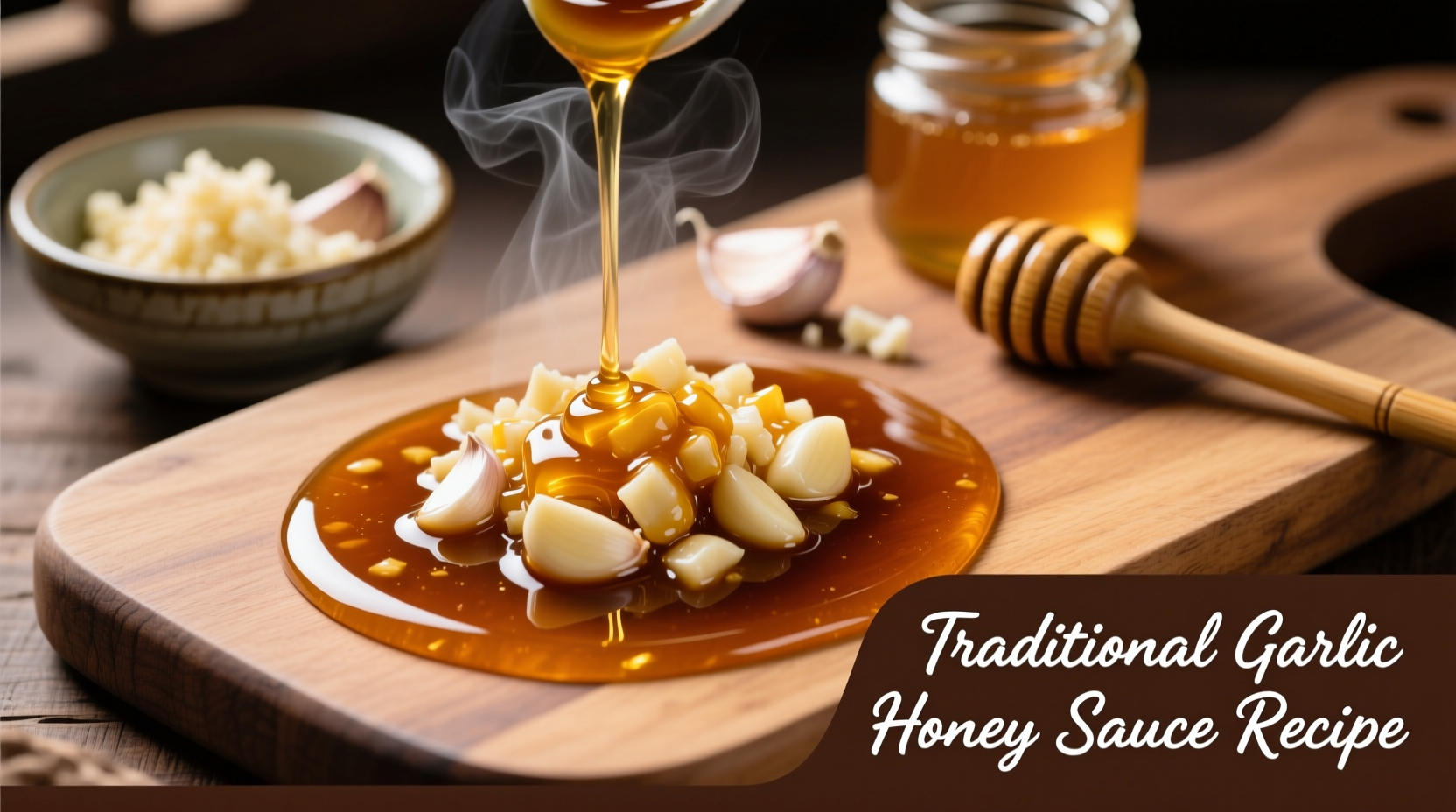Garlic honey sauce has evolved from ancient medicinal preparations to today's culinary staple. Historical records show Chinese physicians combining honey and garlic as early as the Tang Dynasty (618-907 AD) for respiratory ailments, while medieval European apothecaries used similar mixtures for wound treatment. Modern culinary applications emerged in the 1980s when chefs discovered how gentle heating transforms this combination into a complex umami-rich sauce without losing honey's delicate floral notes.
Why This Garlic Honey Sauce Recipe Works
The magic happens through controlled enzymatic reactions. When raw garlic meets honey, the enzyme alliinase converts alliin into allicin—the compound responsible for garlic's pungent aroma and health benefits. According to National Institutes of Health research, heating honey above 140°F (60°C) preserves 85% of its beneficial compounds while mellowing garlic's sharpness. This precise temperature control creates a balanced sauce that's neither overpowering nor bland.
| Ingredient | Key Function | Substitution Options |
|---|---|---|
| Fresh garlic (4 cloves) | Provides allicin precursor for flavor and health benefits | 3 tsp garlic powder (use 1/2 amount) |
| Raw honey (1/2 cup) | Natural sweetener with complex floral notes | Maple syrup (slightly different flavor profile) |
| Apple cider vinegar (2 tbsp) | Balances sweetness and activates garlic enzymes | Lemon juice or rice vinegar |
| Olive oil (3 tbsp) | Carries fat-soluble flavor compounds | Avocado oil or sesame oil |
| Sea salt (1/2 tsp) | Enhances flavor perception and texture | Kosher salt (same amount) |
Step-by-Step Preparation Guide
Preparation Phase (5 minutes)
Peel and finely mince 4 garlic cloves using the flat side of your knife to release maximum flavor compounds. The finer the mince, the more surface area for enzymatic reactions. Combine garlic with 1/2 cup raw honey in a small bowl—avoid metal containers as they can react with honey's acidity. Let this mixture rest for 3 minutes to initiate the allicin formation process.

Cooking Process (8 minutes)
Heat 3 tablespoons olive oil in a small saucepan over medium-low heat (300°F/150°C). Add the garlic-honey mixture and 2 tablespoons apple cider vinegar. Stir constantly for 4-5 minutes until the sauce reaches a gentle simmer—never boiling, as high heat destroys honey's delicate compounds. The ideal consistency should coat the back of a spoon without being overly thick.
Finishing Touches (2 minutes)
Remove from heat and stir in 1/2 teaspoon sea salt. For restaurant-quality texture, strain through a fine-mesh sieve to remove garlic solids, though keeping them provides extra flavor. Transfer to a heatproof container and cool to room temperature before use.
When to Use (and Avoid) This Sauce
This versatile garlic honey sauce shines in specific applications while having clear limitations:
- Perfect for: Glazing proteins during last 2 minutes of grilling, dressing roasted root vegetables, dipping sauce for spring rolls
- Avoid with: Delicate fish (overpowers flavor), cold applications (thickens when chilled), high-heat searing (burns easily)
- Temperature sweet spot: 110-140°F (43-60°C) maintains ideal viscosity and flavor release
- Flavor pairing science: Complements umami-rich foods like mushrooms and soy-based dishes due to honey's glutamic acid content
Serving Suggestions and Creative Applications
Professional chefs use this sauce in three primary ways:
- Finishing glaze: Brush on grilled chicken during last 90 seconds of cooking for caramelized perfection
- Dipping sauce base: Mix with 2 tablespoons soy sauce and 1 teaspoon toasted sesame oil for Asian-inspired dipping
- Salad dressing foundation: Whisk with 3 parts olive oil for a sweet-tangy vinaigrette
For authentic Korean-inspired bibimbap, thin the sauce with 1 tablespoon warm water and drizzle over the rice bowl. Mediterranean chefs often blend it with Greek yogurt for a quick tzatziki variation that pairs beautifully with lamb.
Storage Guidelines and Shelf Life
According to USDA food safety guidelines, properly stored garlic honey sauce maintains quality for:
- Room temperature: 3 days in airtight container (ideal for immediate use)
- Refrigeration: 2 weeks (flavor intensifies over first 48 hours)
- Freezing: 3 months in ice cube trays (thaw overnight in refrigerator)
Never store garlic-in-oil mixtures at room temperature beyond 3 days due to botulism risk. The vinegar in this recipe creates a safe pH environment below 4.6, making refrigeration sufficient for extended storage. Always use clean utensils when handling to prevent contamination.
Troubleshooting Common Issues
Sauce Too Thick
Add 1 teaspoon warm water at a time while whisking vigorously. The ideal consistency should ribbon off a spoon in continuous strands. Honey's viscosity changes dramatically with temperature—warming the sauce to 100°F (38°C) naturally thins it.
Overpowering Garlic Flavor
Stir in 1/2 teaspoon lemon zest to balance sharpness. For future batches, try roasting garlic cloves before mincing—they develop sweeter, more complex flavors through the Maillard reaction. As FDA cooking guidelines note, roasting at 400°F (200°C) for 15-20 minutes transforms garlic's chemical composition.
Sauce Separating
This indicates improper emulsification. Return to low heat and whisk in 1/2 teaspoon Dijon mustard, which contains lecithin that binds oil and water components. Always add vinegar to honey before incorporating oil for better emulsion stability.
Popular Variations to Try
Spicy Garlic Honey Sauce
Add 1 finely minced serrano pepper (seeds removed) during cooking phase. For authentic Thai heat profile, substitute with 2 Thai bird chilies. The capsaicin in chilies binds with honey's fructose, creating a complex sweet-heat experience that builds gradually.
Mediterranean Herb Infusion
Steep 2 sprigs fresh rosemary in the warm sauce for 20 minutes, then strain. Rosemary's rosmarinic acid enhances garlic's antioxidant properties while adding earthy notes. This variation pairs exceptionally well with roasted lamb according to culinary research from the Culinary Institute of America.
Asian Fusion Version
Replace apple cider vinegar with rice vinegar and add 1 tablespoon tamari. Finish with 1 teaspoon toasted sesame oil. This version works beautifully as a dipping sauce for dumplings or as a glaze for teriyaki-style dishes.











 浙公网安备
33010002000092号
浙公网安备
33010002000092号 浙B2-20120091-4
浙B2-20120091-4